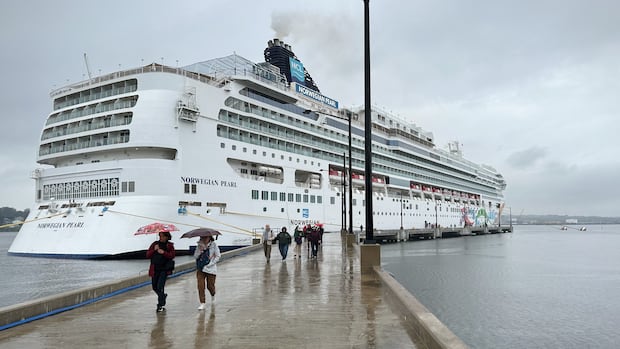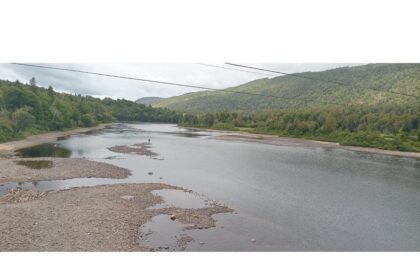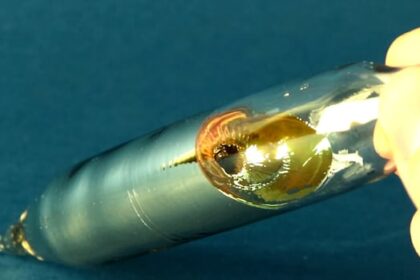Cruise ships visit Halifax daily during much of the year, each spewing a town’s worth of people — and a town’s worth of pollution — into the city while docked in the port.”At some point, you know, just a blue cloud of smoke will waft over the three blocks or four blocks around the port,” said Brent Dancey, director of marine climate action at the conservation group Oceans North. Local residents have complained about it in Halifax and other Canadian cities, such as St. John’s.There is a solution: Plugging the ship into the local grid through a connection known as shore power, so it doesn’t have to keep burning fuel to power the ship while docked.Here’s a closer look at this technology, its potential impacts and what that means for the recently fast-tracked port expansion in Montreal and proposed expansion in Churchill, Man.What exactly is shore power?Ships burn heavy fuel oil and marine diesel oil, producing hazardous pollutants like fine particulate matter and greenhouse gases. Besides propelling the ship, burning fuel generates electricity necessary to keep a cruise ship habitable for up to 5,000 passengers or refrigerate an entire container ship’s load of perishable goods. That means ships keep polluting while in port, unless they have access to shore power, a source of on-shore electricity and the infrastructure that allows the ship to plug into it.Of course, to use the shore power, ships themselves must also be fitted with the right connections. Why would ports want ships to plug in?The most obvious benefit is a reduction in harmful pollution — Dancey said this is what initially motivated hazy Los Angeles to install shore power for cruise ships.Shore power is also a simple way to reduce the climate impact from the shipping industry, which generates three per cent of global greenhouse gas emissions. That’s one reason it’s becoming mandatory in jurisdictions like the European Union.WATCH | Why some importers prefer wind-powered cargo ships:See what a wind-powered cargo ship looks like and learn why some importers prefer itSome companies have found a unique way to reduce their carbon footprints by importing products using a sailing cargo ship, one of which recently stopped in Quebec City.Canada may be getting the ‘dirty ships’Oceans North recently released a research brief on the state of shore power in Canada. It found that so far, four out of Canada’s 17 port authorities have some shore power: Vancouver, Prince Rupert, Montreal and Halifax. It’s available to cruise and container ships, for which there are international standards ensuring vessels and ports have compatible connectors worldwide.So far, Dancey says, “we don’t really have that much coverage” in terms of the number of berths and terminals that support shore power.For example, the Port of Halifax installed a system for cruise ships in 2014 that can accommodate only one ship at a time, even though it sees up to five ships in a day during the cruise season. Other major ports around the world such as Long Beach, Hamburg and Shanghai have “near-universal” coverage at cruise and container terminals, the Oceans North report found.Dancey said so far, just a fraction of global fleets can use shore power, and those ships will be attracted to ports that offer it.”What it means is, you know, we [Canada] get the dirty ships and the Port of L.A. will get the cleaner ships.”WATCH | Reshaping the shipping industry for a sustainable future:Reshaping the shipping industry for a sustainable futureShipping is the foundation of the global economy, but for years it sailed under the radar for its huge carbon footprint — but not anymore. CBC Chris Brown travels to Denmark to learn more about efforts to push the industry into a sustainable future.Ships don’t always plug into Canada’s shore powerDancey said that in Canada, even when shore power is available, ships don’t always plug in.Miako Ushio, director of environmental affairs with the Shipping Federation of Canada, said sometimes, the ship simply doesn’t line up with a particular dock exactly as needed to connect while being able to safely load and unload.Hugo Daniel is a doctoral student researching shore power at the University of Sherbrooke. He said it may also be that the cost of burning fuel is lower than connecting to electricity at a given time, and there aren’t enough incentives to connect, such as discounts on harbour fees.Kurt Slocombe, vice-president of operations, planning and infrastructure at the Prince Rupert Port Authority, said that by plugging into shore power, “you’re saving on the fuel usage, but you’re expanding on the electrical usage. And so our hopes are that we make it essentially a break-even proposition.”Since 2023, just 15 container ships have plugged in at Prince Rupert, but there has been an uptick this year, Slocombe said. About 150 to 175 container ships visit the port each year.California, Europe and China have regulations requiring ships to plug in if they can. Transport Canada confirmed to CBC News that Canada does not.Most shore power installations in Canada have been largely funded by the federal government — Prince Rupert’s installation alone received $7.6 million. Given the millions Canadian taxpayers have invested in shore power, Dancey said, “not compelling ships to plug in really isn’t getting the value for Canadians.”But Transport Canada wrote, “The increased use of shore power faces challenges, which national regulations would not address, including, for example, the capacity of domestic electricity grids to avoid local power outages from increased shore power use.”Shore power key component of future portsShore power regulations are ramping up in other parts of the world.The EU will require ships to plug into shore power or “alternative zero-emissions technologies” at most major ports in the EU starting 2030 and all EU ports equipped with shore power by 2035. WATCH | The Contrecoeur port terminal is expected to generate significant economic benefits:The Port of Montreal’s Contrecoeur expansion: an economic muscle and a ‘dangerous game’One of five ‘nation-building’ mega-projects being prioritized by the federal government, the Contrecoeur port terminal is expected to generate significant economic benefits. Some argue it will also come at a significant cost — and they’re not just talking about its $2.3-billion price tag. California recently expanded shore power requirements beyond cruise and container ships to refrigerated cargo and auto carrier vessels statewide, as well as oil tankers in the ports of Los Angeles and Long Beach.Daniel is currently part of an International Electrotechnical Commission working group to develop shore power standards for other ship types, especially bulk carriers for goods such as grain or minerals.Meanwhile, the International Maritime Organization has set a goal to make the shipping industry net-zero by 2050 and set emission standards for ships, The federal government recently fast-tracked a port expansion in Montreal.At a news conference last week, Julien Baudry, vice-president of communications for the Montreal Port Authority, promised “every ship that will be able to call at that terminal will have access to shore power.”Daniel said most container and cruise ships coming into Montreal will have shore power compatibility because of the EU regulations. Installing shore power or shore power readiness during port construction or major retrofits, he added, is much cheaper than trying to put it in later. The federal government has also said upgrading the Port of Churchill is of interest. Oceans North’s report suggests it should have shore power in mind too. Dancey said it’s something Canadian ports will have to offer to stay competitive.”We really have to be investing in building the port of the future, which means having renewable electricity supply at these ports.”
Ports stop polluting ships from idling by installing ‘shore power’











